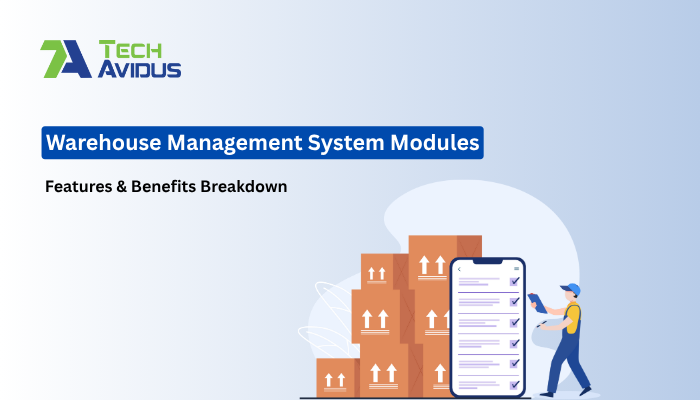
In today's fast-paced supply chain environment, even a minor inefficiency in warehouse operations can result in delivery delays, inventory errors, and lost revenue. A modern Warehouse Management System (WMS) tackles these issues head-on, but not all WMS platforms are created equal.
To make an informed investment, it's crucial to understand the core modules of a WMS, their features, and how each module contributes to better visibility, automation, and control over your warehouse operations.
A Warehouse Management System is software that helps manage and optimize warehouse operations, from inventory tracking and picking to shipping and returns. Unlike spreadsheets or legacy systems, a WMS provides real-time visibility, automation, and scalability to reduce human error and increase efficiency.
Why is my warehouse inventory always inaccurate?
Because of outdated tracking methods, manual errors, and a lack of real-time updates.
What it does:
Tracks every item from the moment it enters your facility until it leaves. Enables real-time inventory visibility, batch and serial number tracking, and cycle counting.
Real-world example:
A food distributor reduced inventory discrepancies by 43% after implementing real-time tracking in its WMS.
Handles order processing, allocation, and fulfillment.
Benefits:
How to eliminate manual processes in warehouse operations? - Use barcode scanning and AI-assisted putaway algorithms.
What it does:
Automates the inbound process. Items are scanned, categorized, and directed to the most efficient storage location based on demand and rotation.
How to reduce picking errors in the warehouse?
By using guided picking methods such as RF scanning, pick-to-light, or voice picking.
What it includes:
Benefit:
Up to 70% reduction in picking errors reported when using WMS with smart picking logic.
Handles carrier selection, label generation, and real-time tracking.
Integration:
Connects with FedEx, DHL, UPS, and regional carriers for live updates.
The Returns Management Module handles returns and damaged goods.
What it does:
Optimizes workforce productivity by tracking KPIs and individual tasks.
Features:
Why it matters: Every module generates valuable data. The analytics dashboard consolidates this into actionable insights—from SKU movement to order accuracy rates.
Benefits of Warehouse Management System Modules
AI & ML Use Cases in WMS
According to a 2023 McKinsey report, AI-driven warehouse operations can improve productivity by up to 25%.
Not every business fits into a boxed solution. A custom WMS gives you full control over:
Want to explore custom WMS development? We offer free consultations to understand your exact needs and guide you on budget, tech stack, and implementation timeline.
A Warehouse Management System isn't just about inventory—it’s about efficiency, scalability, and delivering better service in a complex supply chain. Whether you're starting small or scaling globally, the right WMS modules can make the difference between firefighting and future-proofing.
Need help identifying the right modules or building your own WMS? Request a Free Consultation with our warehouse tech experts.
A WMS integrates with your hardware (scanners, conveyors) and software (ERP, CRM) to manage inventory, orders, shipments, and returns. It tracks every item in real time and automates tasks across your warehouse.
Common reasons include: lack of real-time updates, human errors during counting, or disconnected systems. WMS solves this with automated scanning, digital record-keeping, and cycle count tools.
Implement smart picking modules with barcode scanning, guided workflows, and staff performance tracking.
The Returns Management or Reverse Logistics module.
Start with Inventory, Receiving, Picking, and Order Management. Then scale up with Labor and Analytics.
Forecasting, task automation, anomaly detection, route optimization, and labor planning.

Keshu Keshvala is the CMO at TechAvidus, a trusted India-based software development company specializing in AI-powered web, mobile, and custom solutions. With 10+ years in IT, Keshu drives enterprise-grade digital solutions that help clients cut costs, boost efficiency, and achieve business goals.
We have the most experienced Top 1% of Tech Talent Teams who can deliver superior technology solutions.
All Rights Reserved. Copyright © 2025 | TechAvidus